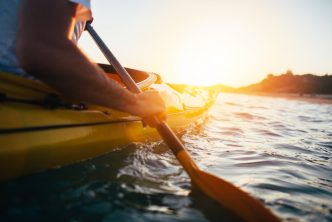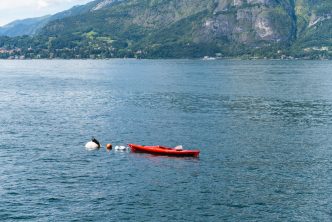Kayaking is an amazing sport and a great way of staying in shape. But kayaking can also be quite dangerous for someone unfamiliar with how to remain safe while doing it. One of the most pressing issues a person has to consider while kayaking is avoiding their kayak capsizing with them in it.

Capsizing in a kayak can potentially be fatal, so it makes sense to examine how to best prevent your kayak from tipping over. Keep reading to learn how to not tip a kayak.
Prevent Your Kayak From Tipping Over
Anyone who participated in continuing or any other form of water activity, either through a summer camp or school trip, will no doubt be familiar with individuals who think it is the height of comedy to capsize their boat with everyone in it. It is far less funny when it is a kayak
The problem is that when a person is in a kayak, their legs must be secured inside of the boat so that they can steer and balance it while rowing. If the kayak capsizes, the person inside becomes trapped underwater while they struggle to free their legs. Things become even more problematic when kayaking on rapids or other rocky bodies of water where head injuries become even more of a threat than they already were.
Select The Right Kayak for Your Skill Level
The first thing to cover in terms of safety is that kayaking is a skill that takes time to build and develop. Injuries happen far more often when underskilled people attempt kayaking routes that are too complicated for them. A beginner kayaker is not suited for white water rapids, for instance. It is very important to be comfortable with the routes taken and the skills required to do so safely. Calm water is better for beginners so that they can learn the basics before moving on.
A smaller kayaker needs a smaller and lighter kayak that they can easily maneuver. There are a variety of different models of kayaks ot there suited for a wide range of different types of kayaking and environments. Choosing the right kayak for a specific trip is an important part of kayaking.
Find Your Balance & Tie Down Load
Part of keeping a kayak upright is controlling how weight is distributed throughout the kayak in general. It is important for a kayaker to find the center of gravity in the middle of the boat as well as to make sure all of their supplies and gear are tied in place securely. Good weight distribution is the easiest way to stay upright in the water.
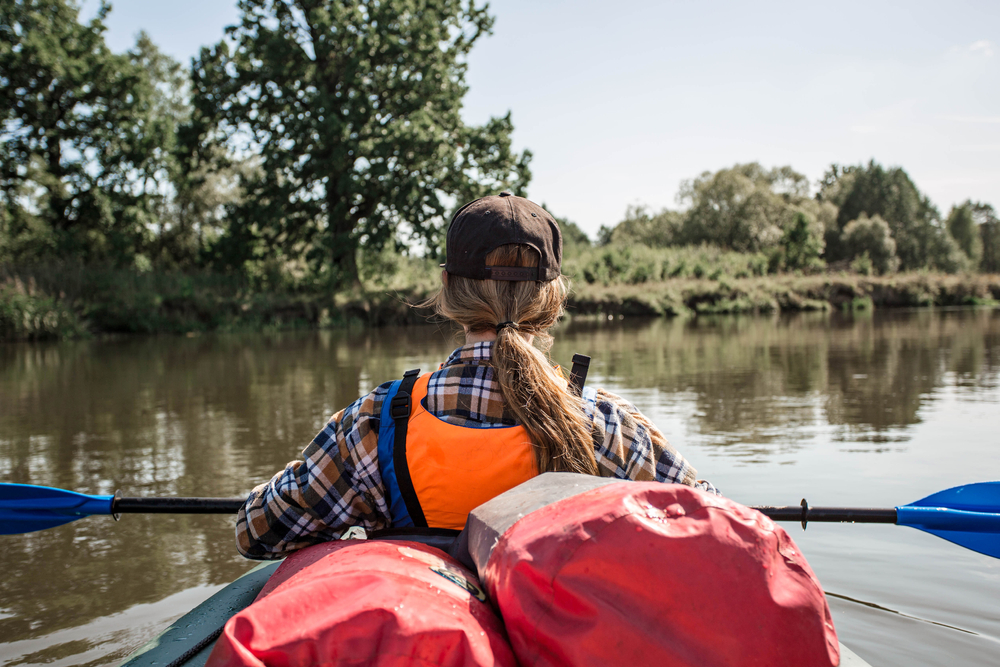 While kayaking, it is also important to maintain balance through the speed and method of strokes a kayaker uses. Knowing how to maintain balance while also judging how deep and long individual strokes need to be is just as important as weight distribution. Maintaining proper balance through the strokes a kayaker uses also helps keep the kayak straight.
While kayaking, it is also important to maintain balance through the speed and method of strokes a kayaker uses. Knowing how to maintain balance while also judging how deep and long individual strokes need to be is just as important as weight distribution. Maintaining proper balance through the strokes a kayaker uses also helps keep the kayak straight.
Follow The Three Points of Contact Rule
The three points of contact rule dictate that there should be three points of contact between the kayaker and their boat. It is important for any kayaker to pick a boat that allows them to easily maintain three points of contact. The kayaker’s bottom and legs should be making contact with the floor of the boat. The kayaker’s back should also maintain contact with the back of the seat to ensure the proper upright posture while rowing.
Conquer Waves Head-On
The easiest way a kayaker gets capsized is by turning parallel to an oncoming wave. It is a natural response that anyone wanting to kayak must find a way to overcome. The best way to conquer potentially dangerous waves while kayaking is to face them head-on. Kayaks are aerodynamic by nature, so the narrow prow of the boat has an easier time cutting through the wave than the side would.
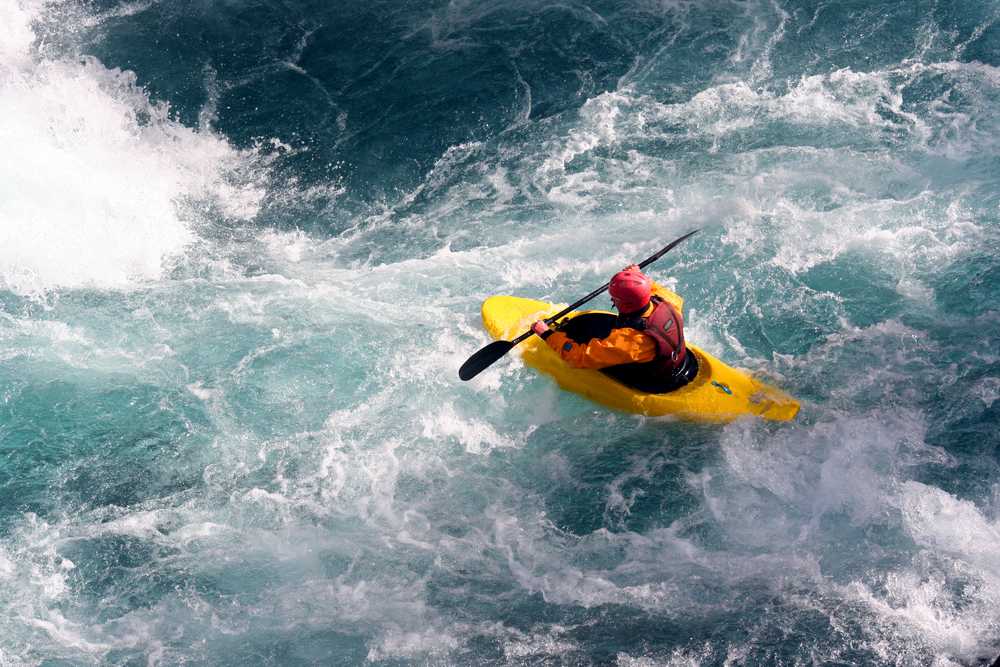 Additionally, by paddling straight into the wave a kayaker has momentum on their side. The force generated by actively paddling toward the wave prevents the kayaker from being displaced while doing so.
Additionally, by paddling straight into the wave a kayaker has momentum on their side. The force generated by actively paddling toward the wave prevents the kayaker from being displaced while doing so.
Practice Your Flipping
All of these tips for avoiding capsizes are very useful, but they are not foolproof. So as important as practicing kayak safety measures such as the three-point rule and tying down gear, it is equally important for a kayaker to practice more immediate safety concerns such as what to do if they are capsized.
The easiest way a kayaker might recover from a capsize is by flipping themselves back over. Flipping requires a degree of abdominal strength as well as the use of the oar. A kayaker must either push off of the bottom of the body of water they find themselves in or make a large circular gesture under the water with their oar in order to right their boat. Repeated proactive sessions of both of these tactics are a kayaker’s best chance of staying safe.
What If You Capsize?
Any kayaker should expect to occasionally capsize or come close to capsizing. You should practice how to handle yourself when you capsize. Don’t try this alone and make sure you have other people around you when practicing.
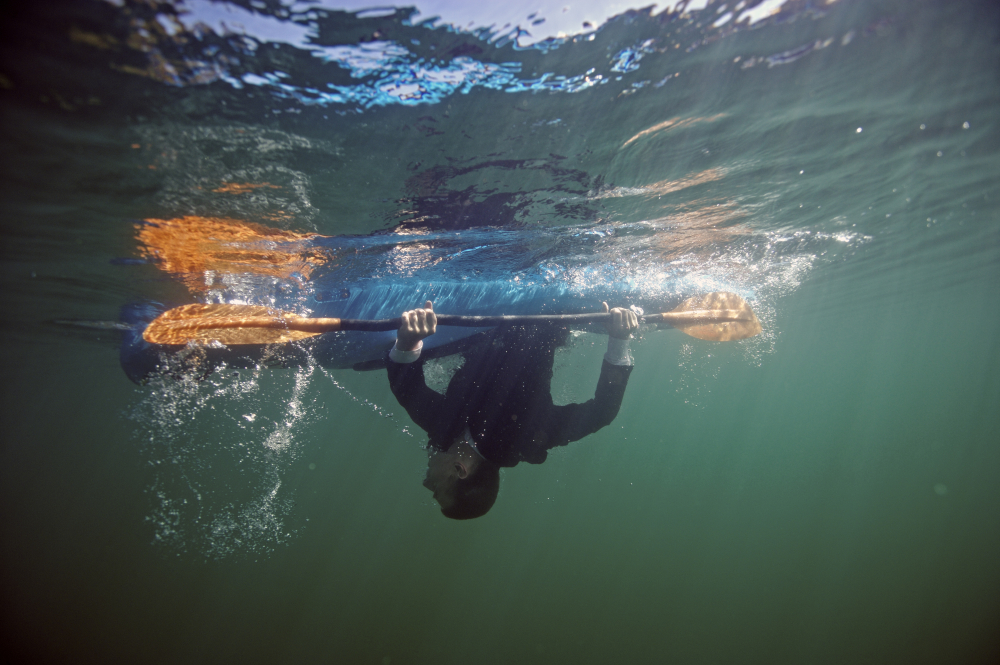
Stay Calm
Like in any tense situation, the best thing a capsized kayaker can do for themselves is stay calm. Thrashing around under the water does not help anyone, least of all the person suspended upside down inside their kayak. If a kayaker capsizes, they must remain as calm as possible and roll their kayak back upright. If you can’t roll back over, pull yourself from the kayak and swim to the surface.
Get to Safety
If a kayaker capsizes their first priority should always be to get back upright. Once back upright, check your surroundings and get to safety. Collect yourself and make sure you’re ok before continuing on.
Conclusion
Safety is the most important consideration when doing any activity, this is doubly true in nature. Capsizing can be dangerous and potentially fatal for kayakers, so following safety protocols is doubly important while kayaking. So long as everyone kayaking understands how to distribute their weight and properly face waves, they should be fine most of the time. If a capsize does occur, it is vital that the kayaker remain calm and get themselves to safety.
So long as a kayaker or group of kayakers follows these guidelines they will most certainly be ok.

